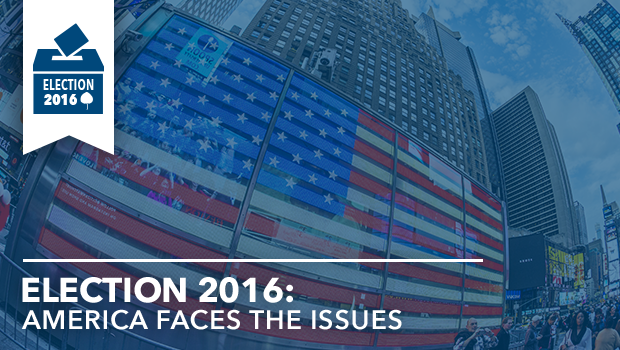The ideal of American exceptionalism is always being tested, here and abroad. We see this during elections. Our sense of exceptionalism is both native and worldly, and it extends to almost every facet of the social order, whether or not we actually attain exemplar global standing in education, health, justice, prosperity, technology, or tolerance. Another critical area we should and do excel in is our energy system — the development, production, and efficient use of energy for our homes, transportation, commerce, security, and enjoyment.
Regardless of who becomes president, it is important for the US to maintain its prominence in innovation related to our energy economy. To continue to do so, however, we need to shed the partisan paralysis that glooms over the political economics that determines and limits how well our energy system can and should work in the not-so-distant future. If politics is policy, then the future of the nation’s energy system and overall infrastructure must be reimagined and reformed with a grounding in realism, not ideology. We can elect to be at the vanguard of international leadership with clean, safe, smart, affordable, and reliable energy for the 21st century.
One of our critical infrastructure needs that could benefit from a big dose of American know-how — one that leverages our unmatched economic resourcefulness and scientific prominence, but tests our political sensibility — is the need for a set of new energy policies and market structures to modernize our energy system and efficiently address climate change at the same time. The president and Congress together can address the need to help curb the buildup of dangerous greenhouse gases in the atmosphere while pursuing the best possible complement of policy and market options to usher forward an energy system based on a diversity of clean working energy sources and smart consumer choices, not ideology. Short-term political sentiment must be replaced by a long-term view of sustainable energy production and the most resilient infrastructure we can design and afford.
The current political impasse on energy and climate is almost purely ideological, on both sides of the aisle, holding America hostage to a Hobson choice between mediocre political business-as-usual and, well, incapable business-as-usual. On one hand, there is exuberance about the rapid technological growth of renewable energy options and innovations in distributed generation, storage, and demand response. On the other, a stubborn refusal to rethink our energy infrastructure and unleash the next generation of hyper-efficient, clean-energy systems and smart customer choices that can effectively contend with these advances in technology. We should emerge from the great national confusion over the relationship between energy and climate change with a more positive vision of the future and an energy system rooted deeply in scientific and economic reality.
One of the realities that we will contend with is how to balance advances in new energy-delivering technology with evidence-based policies and the strength of the marketplace. The cost of clean-energy production, for example, in wind and solar, has changed tremendously in the past 10 years, for the better, but we are not going to reduce our net national carbon footprint or meet our emissions reduction goals with 100 percent renewable energy alone any time soon, not in the next 15 to 20 years. Likewise, the boom in the development of shale gas has replaced much of the country’s reliance on coal but could present other risks if not well-managed and regulated, especially by states, as a legitimate source of energy. Last, but equally important, how do we utilize or extend our existing nuclear fleet, and invest in advanced nuclear technology and research, as a significant source of electrical power with zero carbon emissions?
No one agrees on what the right mix of these energy sources should be, and we need to put a price on carbon to let the market, not politics, force new technologies. The reality is that we need and will be living with “all of the above” for at least the next two decades. It is crucial not to rely on the promise of renewables alone, and to take a critical eye to policy so that it does not reflect business as usual.
Realism dictates the need to adopt a more economy-wide clean energy standard that works beyond select renewable portfolio standards, much as New York has recently adopted. The proposal, though controversial and prone to legal challenge, is notable for being the first of its kind to formally recognize the zero-carbon-emitting potential of nuclear facilities. Regardless of these and other challenges, the point is that we must begin to overhaul the state and federal energy policy complex that was designed over 50 years ago for a different kind of economy and energy system — not the system we have today or the system we will have in the future.


